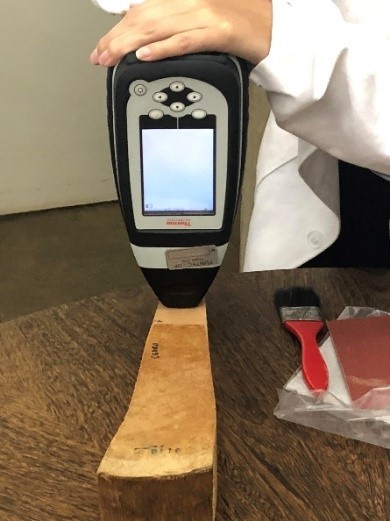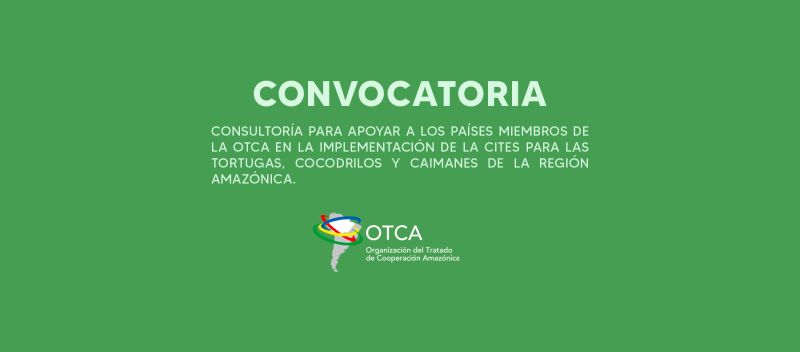The technology can be used by environmental, customs, police and other agents that combat illegal logging and its trade. Study being conducted by the Forest Products Laboratory (LPF), with support from ACTO
Authors: Tereza C. M. Pastore[1], Jez W. Batista Braga[2] & Alessandro C. de O. Moreira[3]
Currently, the most widely used technique for identifying the wood of a forest species is wood anatomy, which compares the anatomical characters of a given sample with reference samples deposited in wood collections or xylotheques. However, due to the need for highly trained specialists, this method has not been able to meet the large demand from the forest products trade. Currently, other instrumental or electronic techniques are being developed to aid in wood identification.
NIRS technology, a combination of Near Infrared Spectroscopy (NIRS) and chemometric analysis, is proposed as an alternative to wood anatomy. The experience of our research group has shown that as long as the wood spectra are obtained from samples in the same humidity condition and that have had their surfaces prepared in the same way, it is possible to use a model created from a base of NIRS spectra to determine either the forest species or its origin (Figure 1).

Figure 1. Near infrared spectroscopy (NIRS) apparatus being tested in wood identification.
The wood selected in the NIRS spectra bank includes mainly species designated as endangered by CITES – Convention on International Trade in Endangered Species of Wild Fauna and Flora or similar. The database can be used by environmental, customs, police and other agents that fight illegal timber extraction and trade, just like other databases such as ForeST – (Forensic Spectra of Trees), which makes available the results of wood analyses obtained by mass spectrometry. The collection of near infrared spectra (NIRS) of tropical wood species from the Forest Products Laboratory of the Brazilian Forest Service (LPF-SFB) is extremely important because it allows the interested public to access and build wood identification models according to their needs and local conditions.
Considering the potential of this tool for the study and protection of wood-producing species, LPF-SFB, together with the Laboratory of Automation, Chemometrics and Environmental Chemistry of the University of Brasilia (AQUA – UnB), makes available, through this database, the NIRS spectra collected, since 2014, of three distinct groups:
- Swietenia macrophylla (mahogany) and five visually similar species (Swietenia humilis, Carapa guianensis, Cedrela odorata, Mycropholis melinoniana) of various origins;
- Swietenia macrophylla (mahogany) from five Latin American countries: Bolivia, Brazil, Guatemala, Mexico and Peru;
- Dalbergia nigra (jacarandá-da-Bahia), decipularis, D. sissoo, D. stevensonii, D. latifolia, D. retusa and 10 other species of the same genus and from various origins.
This study has been receiving support from the Amazon Cooperation Treaty Organization (ACTO), through the Bioamazon Project, under Component 3 of support for sustainable management initiatives and traceability of endangered species.
The files are available in .txt format. This format contains all the information to be imported into the Method Generator software, which is the software for analyzing the data in the equipment where the spectra were obtained. However, the files can be imported into different types of specialized software or even spreadsheets. Considering their import into a spreadsheet (for example, using Microsoft Excel or LibreOffice software), each row corresponds to the spectrum of one sample.
The database aims to promote the management and dissemination on the internet of files containing the near infrared spectra of wood, which serve as an auxiliary tool in the process of its identification. The system should allow environmental agents to download the files containing the spectra so that they can be trained in the construction of species identification models by NIRS and, through transfer strategies, they can use this data to expand their own databases to increase the robustness of their models and thus have more confidence in taking decisions on site, in enforcement actions that may indicate possible illegal logging.
Since the download area is free to access, we hope this database can contribute to the development and strengthening of research in other groups and to practical actions that facilitate the identification of wood. The acquisition and organization of the spectra followed rigorous protocols (described in each file), and the provenance of the samples or their identification was done through their origin in reference collections or through anatomical analysis by highly trained specialists. However, LPF-SFB and AQQUA-UnB clarify to users of the database that its use and application depends on the procedures that will be used to analyze the spectra available (e.g. type of pre-processing or chemometric model) and the way they will be applied to the data.
LPF-SFB has already held a training course for IBAMA inspectors on the use of the tool and, with ACTO’s support through the Bioamazon Project, the training of technicians from ACTO member countries is planned for the second half of 2021.
[1] Forest Products Laboratory of the Brazilian Forest Service (LPF-SFB). Contact: tereza.pastore@florestal.gov.br
[2] Laboratory of Automation, Chemometrics and Environmental Chemistry of the University of Brasilia (AQUA – UnB). Contact: jez@unb.br
[3] Forest Products Laboratory of the Brazilian Forest Service (LPF-SFB). Contact: alessandro.moreira@florestal.gov.br



